Thrift Shopping – What’s the Value?
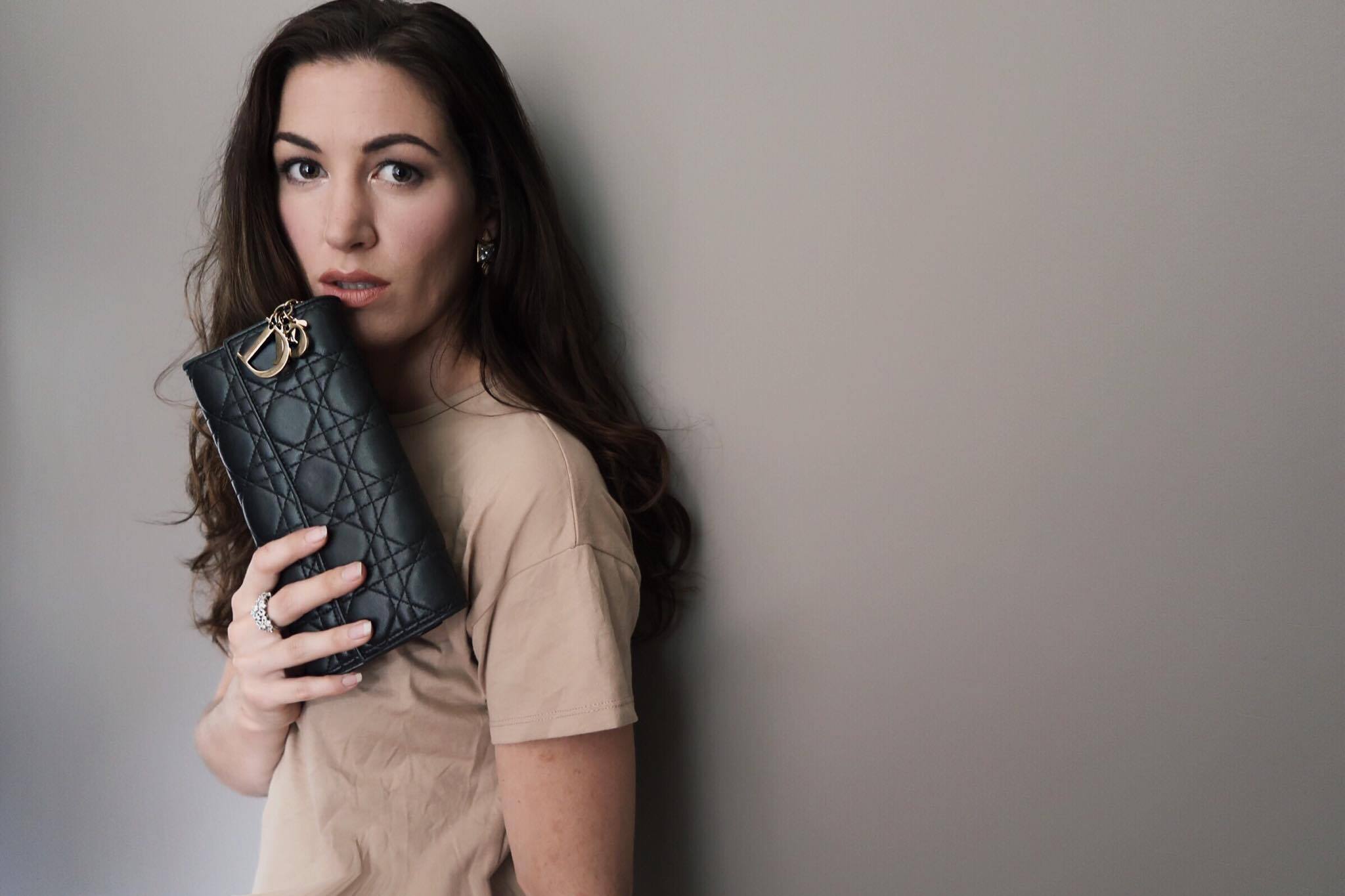
[apss-share]
“Cannot people realize how large an income is thrift?”
– Cicero

[apss-share]
“Cannot people realize how large an income is thrift?”
– Cicero

[apss-share]
Lately I have been on the hunt for some sustainable fashion Ted Talks. After combing the archives I found 6 binge worthy sustainable fashion Ted Talks.
1.Eva Kruse: Changing the World Through Fashion
“..ultimately, actually helping the industry earn more money by making you all want something new. A new color, a cut, or a new fit because that’s the nature of the business. And that’s creating jobs. It’s a good thing. It’s creating jobs all around the world from the cotton farmer to the shop assistant. However, lately building the industry and making it make more money is not all I have been doing because there is a flip side to it all. The fashion industry is also one of the worlds most polluting industries.” Eva Kruse
2. Clara Vuletich: How to Engage with Ethical Fashion
“The good news is I believe things are changing for the better. We are currently in a transition to a new type of fashion industry based on ecological and holistic principles – of closing the loop on materials. That prioritizes community, values and respect of all the people in the supply chain.” Clara Vuletich
3. Andras Forgacs: Leather and Meat without Killing Animals
“What’s crazy is what we do today. I’m convinced that in 30 years, when we look back on today and on how we raise and slaughter billions of animals to make our hamburgers and our handbags, we’ll see this as being wasteful and indeed crazy.” Andras Forgas
4. Lucy Siegle: The Wardrobe to Die For
“We’re all a nation of fashion addicts. That’s how we’ve become and that’s been enabled really over the last 20 years by a phenomenon known as fast fashion.” Lucy Siegle
5. Christine Dean: You Are What You Wear
“You have an incredible power to reduce the pollution in the fashion industry.” Christine Dean
6. Maxine Bédat: The High Cost of Cheap Fashion
“In the 1960’s the average American invested in 25 new pieces of clothing every year. A generation later, today and we purchase 3x as much clothing as we did in the sixties.” Maxine Bédat
Hope you enjoyed these sustainable fashion Ted Talks as much as I did. Make sure to leave a comment and let me know which one was your favorite!


[apss-share]
The fashion industry is comprised of one thirsty business after another. With summer in full swing I can’t drive through a single town without seeing a water restriction or ban sign. As individuals we are all told to do our part in helping to conserve water but what about corporations? What about the fashion industry? Just how much water does it really take to produce our clothing?
By now you may have seen the statistical number 2,700 litres (approximately 714 gallons) floating around. This is the amount of water used to produce just one T-Shirt! You read that right, a single shirt! But, being American I don’t exactly have an idea of what a litre is nor does such a large number really mean anything, so let’s break it down.
2,700 Litres for One Shirt is the equivalent to:
1,350 Days of Recommended Drinking Water Per Person (8, 8oz glasses per day)
or
569 Bottles of Wine
or
178 Weeks of Watering a Rose Bush Every Day
or
119 Dishwasher Cycles
or
41.5 Showers
I’m not sure what to be more shocked at, the fact that one shirt uses about three and a half years of personal drinking water or that 569 bottles of wine will never get produced because that water is going to a single shirt.
Now I know this seems a bit too simple and sure you don’t trade one product for another in production, that’s just not how things work, but fresh water is a finite source and sooner or later we will run out (sorry to burst your bubble climate change deniers) so, let’s take a closer look at exactly how much water one industry, fashion, really uses and consider if it is really worth buying one more article of clothing or not.
In 2015 Eileen Fisher told a crowd at a Chelsea Pier Ballroom that “the clothing industry was the second largest polluter in the world…second only to oil.” Whoa there Eileen, aren’t you a clothing designer? And how do you know that? Indeed, Fisher is a prominent designer whose clothing you have no doubt seen but she is also a sustainability advocate and is doing her part to help overhaul the industry. To the second point we don’t really know just how toxic the fashion industry has become because surprise, surprise companies don’t really like to tell us about the downsides of their businesses. Shocking, I know! But, the fact remains, as one of the most prominent industries the rapid consumption of clothing and accessories has contributed to astounding water pollution and mind boggling water consumption.
In order to make traditional clothing, the first thing that needs to happen is to grow the raw materials. This is most often cotton – remember it is the fabric of our lives. Approximately 20 million tons of cotton are produced each year spanning a total of 90 countries. It takes 20,000 litres of water to produce 1kg of cotton – about one t-shirt and a single pair of jeans. If you thought that was a lot of water just wait until the next phases of production. Cotton has to be harvested, spun, and dyed. It is estimated by Cotton Inc. that 85% of water usage in the fashion industry is directly associated with the dyeing process.
Okay, so at this point you are probably thinking about all the alternatives to cotton and you would be right to know that clothing is made from more than one material. Each of those substitutes show promise in helping to minimize the industries water footprint but with cotton accounting for about half our clothes and other textiles it is unavoidable.
Water consumption isn’t the only problem with the fashion industries footprint. Water pollution is what we can only guess Fisher was hinting at when she said it was the second dirtiest industry. Being as prevalent a crop as it is, some clever manufactures have come up with bug resistant and drought resistant cotton crops. But, this means pesticides and lots of them and guess where those pesticides end up – in the soil – and what does the soil come into contact with? Aquafers! It’s one big closed loop system. Pesticides seep into the soil which run into the water ways, eventually down-stream and into oceans. There is no escaping the pollutants even if the crops are grown half way around the world. Those nasty side effects will eventually come right back to you. “Unsustainable cotton farming, with massive inputs of water and pesticides, has already been responsible for the destruction of large-scale ecosystems such as the Aral Sea in central Asia and the deteriorating health and livelihoods of the people living there.”
The dyeing process is no kinder to the environment. Many of the dyes still used in mass production are toxic. I could get all technical here and talk about low dissolve oxygen concentrations and biochemical oxygen demand (you can read more about that in this very technical report) but let’s just say adding toxic dyes to the water system isn’t good for anyone. From endocrine disruption to preventing sunlight from penetrating the surface of the water, and lastly this scary little piece of information “studies have shown that some classes of dye… may be carcinogenic and / or mutagenic, endangering human health, since the wastewater treatment systems and water treatment plants are ineffective in removing the color and the mutagenic properties of some dyes.”
Now sounds like a good time to get a glass of water and mull this one over. Thanks but no thanks. Luckily for us, there are quite a few companies and corporations out there that have recognized the problems associated with water usage in the fashion industry and are making HUUUUGE changes.
So what can you do?
Buy Less:
Obvious I know. But just remember for every t-shirt you buy you are possibly sacrificing 569 bottles of wine, or 41 showers.
Choose Carefully:
Look for companies such as Eileen Fisher, Levi’s Water<Less, United By Blue, Amour Vert, and Zady that are doing their parts to reduce the industries water footprint and pollutants.
Wash Less, Wear More:
Seriously! We live in a disposable culture and that includes our clothing. Stop this habit right now. Livia Firth brought us the #30Wears challenge. Buy higher quality clothing that you can wear over and over again. The first step in a sustainable closet is wearing what you already have and then incorporate new pieces that will stand the test of time. Also, wash your clothes less. You don’t need to wash a shirt every time you wear it unless you are a professional mud wrestler.
Mud wrestling and wine aside it all starts with us, the consumers. Choose wisely and demand companies do their part. I for one enjoy showering in clean water and don’t want to see that go away anytime soon.

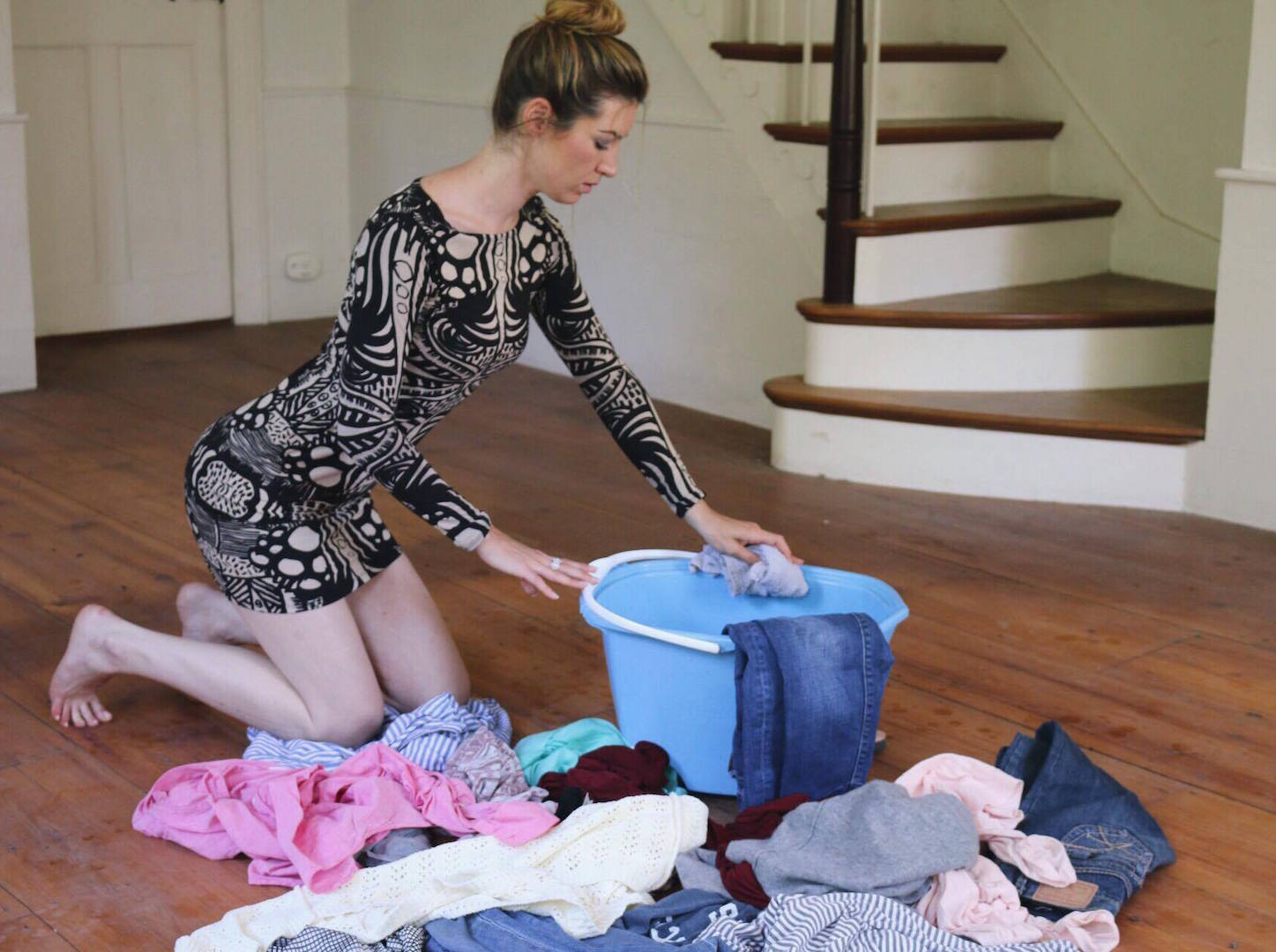
[apss-share]
No doubt you have heard that companies big and small are making changes to go green. From solar energy, to less water usage, to using recyclable packing materials. But in a world where cash is king are companies really going green? Or, are they implementing marketing tactics to make you think their initiatives are bigger than they really are? Are they greenwashing?
Greenwashing, the practice of disseminating disinformation so as to present an environmentally responsibly public image is nothing new. Sure it has a new catchy name but companies have been using marketing tactics to make it appear that they are truly implementing their customer’s desires.
As the impact of the fashion industry has on the environment and social rights continues to grow companies would be bad businessmen/women not to listen to their customers concerns about these issues. The more, millennials in particular, raise such questions as how is this hurting the environment? Who is making my clothing? Are they getting paid fairly? How much waste is produced? What is my clothing made from? The more companies are paying attention and starting to make environmentally friendly and human rights changes. This all sounds good, right? But what if I told you many of the companies you think are being proactive are actually just using greenwashing?
Here’s the perfect example. Every year H&M promotes their recycling week. You bring in your no longer wanted clothing and for each bag the company will give you a 30% off coupon for a future purchase at one of their locations. The clothing that is donated is broken into three categories: 1. Wearable, in which case it is then marketed as second hand goods around the globe; 2. Reusable, in the case that the garment is not wearable it is broken down and repurposed into other products such as cleaning clothes: 3. Recycled: Fibers are broken down and used in new fabrics or manufactured to be used as damping and insulation in the automotive industry. Sounds pretty good and all inclusive.
But the fashion industry isn’t a closed loop. Things aren’t as neat and tidy as H&M hopes it would be with their 0% waste initiatives. For starters fast fashion companies such as H&M survive only on our rapid consumption. Their clothing is not made to last. That 30% off coupon is just a marketing ploy to get you back in the store and buying more. Hey, maybe that’s not a bad thing if you can just bring it back for next year’s recycling event… right? There are two key elements being ignored by the company. The first is that over 25 billion tons of textiles is generated every year. To put that into perspective that is approximately 82 pounds of textiles per person, per year! Of that only 15% is recycled and the other 85% ends up in landfills. Not everyone can make it to H&M every year to donate. The clothing that is sent overseas to be sold on second hand markets has been known to tank local economy and stifle local entrepreneurship. How can you create something when you are being flooded with someone else’s stuff?
The second greenwashing offense is what you can’t see. H&M is still guilty of using suppliers that pay low wages and do not provide building safety including fire escape plans. This is why a shirt can cost only $5. You have to cut corners somewhere. The only other thing missing from H&M recycle program is the data. Maybe they think consumers won’t ask questions beyond their 30% off coupon. But here we are asking. What percentage is really sent overseas vs used in the automotive industry. Is every article turned in really recycled and if so to where? Why isn’t this information made public?
Don’t get me wrong donating your clothing isn’t a bad thing. But shouldn’t we know more about where it really goes? And should we really be donating our clothing to a store with the lure of buying more disposable items? That is what greenwashing does. It blinds us to the real issues of behind the garment. The good news is consumers are paying more attention and the appeasement strategy put out by retailers just isn’t cutting it anymore.
H&M is not the only company guilty of greenwashing. Other fashion retailers have also jumped on this bandwagon in an effort to look the part. Here are some keywords to look for as an indicator that things may not be as they seem…
Make a donation: A few companies will donate money to a local charity or to one overseas. This sounds great but many of these companies couldn’t tell you who or where their clothing is being made. This is a strong indicator that less than stellar manufacturer rights are happening behind the scenes. Think overcrowded factories, child labor, and little pay. The tactic of asking for a donation is used to distract you from looking at the real issues of the store by feeling like you did something great in the moment.
Solar energy: I love when companies turn their headquarters green. But their headquarters are a very, very small part of the operation. What about their transport trucks, the mall stores, their suppliers and manufacturers? Now you might be thinking… the company has to start somewhere right? Yes, they do! But they need to stop using toxic chemicals in their clothing which pollutes waterways and your body. I applaud their efforts to make their headquarters green but it only lowers their electricity cost and does nothing to address contaminates to the environment. One does not negate the other.
Organic: Organic is good, it’s not just good; it’s great! But as of now there isn’t really a system to produce high volumes at low costs of organic clothing and still be ethically responsible. High volumes of anything is a strong indicator of sweatshop usage overseas.
Fashion retailers are like any other business: the bottom line is what matters. The fact that greenwashing takes place in my opinion is a good indicator that companies listen to their consumers. They have to, to make that money. But as consumers become more aware greenwashing will eventually have to turn into real practice in order for these companies to stay relevant. So keep asking who made my clothing? What is is made from? Where is it made?


[apss-share]
“They began work at 5:30 and quit at 7 at night. Children six years old going home to lie on a straw pallet until time to resume work the next morning!”
― Mary Harris Jones
Take a look at what you’re wearing. Do you remember when you bought it? How about where? Do you know what it is made from? Or its country of origin? Most of us can’t answer these questions with any precision. So how are we supposed to know who is making our clothing if we can’t even remember when or where we bought it?
December 2 marked International Day for the Abolition of Slavery, yet an estimated 20 million people around the world are considered modern day slaves. A bi-product of poverty, slavery, is often attributed to the lack of education, economic freedoms, and rule of law, all which come together to foster an environment rife with corruption. Of the estimated 20 million roughly 26% (approximately 5.5 million) are children. Read that again. Approximately 5.5 million children around the world are considered slaves!
In addition to slavery a further estimation by the ILO indicates that 215 million children work “under conditions that are considered illegal, hazardous, or extremely exploitative.” Some of largest percentages of this occurs in the agricultural (60%) and manufacturing (7%) fields. So what does this have to do with the clothing you are wearing today?
Child labor in the textile industry is widespread across the globe especially where most of our garments are manufactured today: Asia. From the cotton that is picked, to the buttons that are sewn on, it is likely some aspect of your clothing comes from child labor. In the garment industry, child labor can be broken down into two subcategories: forced and contributory.
Forced labor is synonymous is slavery. Cotton from Uzbekistan is a prime example where state sponsored child labor is employed. You can read more about that in the Denim Dilemma Article. But that’s not the only country where forced labor happens. A 2014 Department of Labor report indicated that garments from Brazil, Argentina, China, Ethiopia, India, Jordan, Malaysia, Nepal, North Korea, Thailand, and Vietnam used forced child labor in their production. The report further mentions the harvesting of cotton attributed to child labor in Benin, China, Kazakhstan, Tajikistan, Turkmenistan and Uzbekistan.
Debt Bondage is another form of slavery used within the textile industry. The Sumangali scheme is one of the better-known cases in India although not straightforward. Known as the “marriage assistance program” girls, often from Tamil Nadu, are brokered into textile factories to earn money for their dowries. “The scheme promises a bulk of money after completion of a three-year contract working in the factory. It – ostensibly – meets the need of poor families and provides stable workforce to factories in Coimbatore.” It doesn’t sound too bad of deal, that is until you learn the conditions in which many of these girls work under. They are often forced to work up to 12 hours a day, live in cramped quarters with limited outside access and monitored, if at all, calls home. Additionally, many of these girls are fired or forced to resign right before their contract is finished to avoid paying out the promised sum. In 2008 the daily wage earned by Sumangali girls was estimated around 50 rupees a day ($0.75) while the legal minimum wage was at 140 rupees. There is no indication that this compensation has increased over the years. Many of the girls are reported to be between fifteen to eighteen when they started working. However, it is known that documents have been falsified to show contractors the factories are complying with the appropriate age restrictions so there is a good chance many of these girls were much younger when they started working.
As I already mentioned poverty is a great influencer on slavery but it is also an enormous factor as to why child labor exists at all. In several countries where wages are irregularly monitored, corruption is rife, or the cost of living is largely out of proportion with wages earned a large percentage of the populations live at or below the poverty line. Assuming a family unit has both parents working they often earn less than is necessary to provide for them. A lack of family planning, and/or support structures in place often means that any children born into the family will end up working to support the household. “There is a clear link between child labour and low wages for adult workers, both in agriculture (cotton production) and in the garment factories.”
Relying on the fact that children are not supposed to be working employers often pay them less than what adults make, as if doing them a favor by employing them at all, and employ them in hazardous and/or tedious tasks that require meticulously precise actions such as beading or embroidery. While sometimes this is done out in the open (generally under falsified documents) most of the time it is done behind closed doors to avoid arousing suspicious should a factory audit occur. One of the more direct side affects of using contributory child labor is there is always a constant workforce without which factories would almost certainly be forced to raise wages to meet the demands of the adult labor force. This type of child labor also continues the poverty cycle by ensuring the children do not attend school and do not earn the skills necessary to create a better life for themselves and families.
If you ask any clothing companies President if they use child labor the answer (I hope) will be a resounding no. I haven’t seen a single report where a company has admitted or even stopped to think about the possibility that one of their contractors or subcontracts could employ children. But, as news reports and documentaries have shown they are omitting a very complicated narrative. While they may not know it initially, the push for cheaper clothing costs to overseas companies has also meant the use of children to meet deadlines, quotas, and also price points, without which a $4 shirt is not possible. Ask yourself next time you see a sale: how can a garment be priced that low and the company still profitable?
Company guidelines, which can generally be found on their corporate pages, outline among other things human rights and working standards to which all their contractors are to adhere. Sounds great but who is monitoring them? There are certainly efforts from the selling companies, NGO’s and local governments to monitor and report on factory conditions but a clear line of responsibility has yet to be established, especially in the rampant subcontracting world. A CBS Fifth Estate production titled “Made in Bangladesh” shows just how complicated it is to trace a single item of clothing and in the end no one took responsibility for the item fearing repercussions. With just 7 percent of fashion labels publishing lists of suppliers and only 9 percent reporting on code of conduct compliance at least part of shirt was made in a factory that employs unfair labor conditions. It is common place for a company to deny having an article of clothing made in a factory that has been reported to have poor working conditions and/or child labor although workers often contest this point by showing exactly what they sewed/made on the particular item. In an effort to not get their hand caught in the cookie jar denial seems to be commonplace. So while some company oversight does exist the real question remains are they aware or blissfully ignorant in order to keep pricing low? Both are unacceptable. And, if this is not the case why not make public the manufacturing records with a traceable line of production?
So how do we help keep children out of the workplace and put them back in school? One suggestion is to stop or drastically reduce buying fast fashion. Those low prices come with a whole lot of baggage that is contributing to the vicious poverty cycle. The second is to demand answers. Companies need to be held responsible for the part they play. Look to see where the item is made. Is it made in China? Bangladesh? India? Send an e-mail to the company asking for more information. As consumer we have the right to know what we are buying and from whom. If you don’t know where to start, shop local. Local business owners generally have a great grasp on where their products are manufactured. They have often spent painstaking hours building relationships with these individuals and can tell you all about it. This is also a great network to have and branch out from. Lastly, you can demand change from the top down. Several organizations are working to combat child labor. These include End Child Slavery, Global March Against Child Labour, Stop Child Labor, and No Child For Sale among others. These organizations work with local governments, individuals, companies and other international organizations to help stop child labor around the globe.

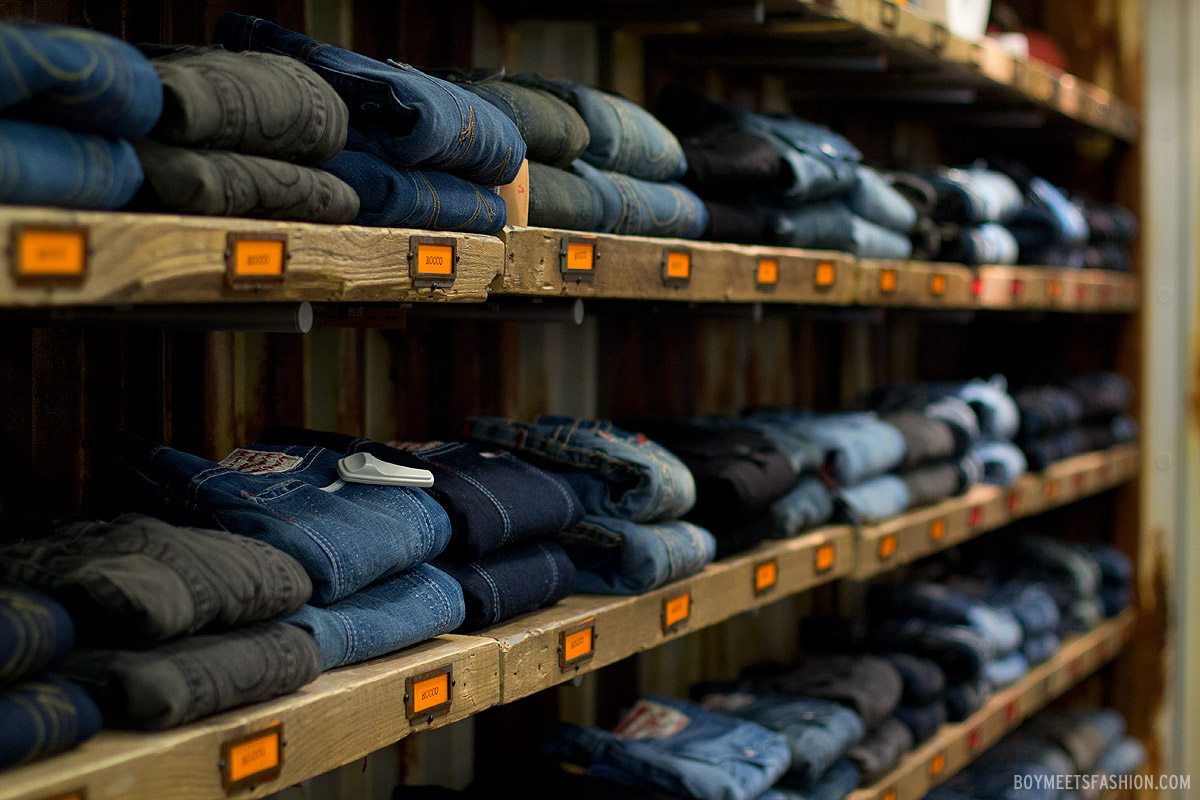
[apss-share]
“To cheapen the lives of any group of men, cheapens the lives of all men, even our own. This is a law of human psychology, or human nature. And it will not be repealed by our wishes, nor will it be merciful to our blindness.”
― William Pickens
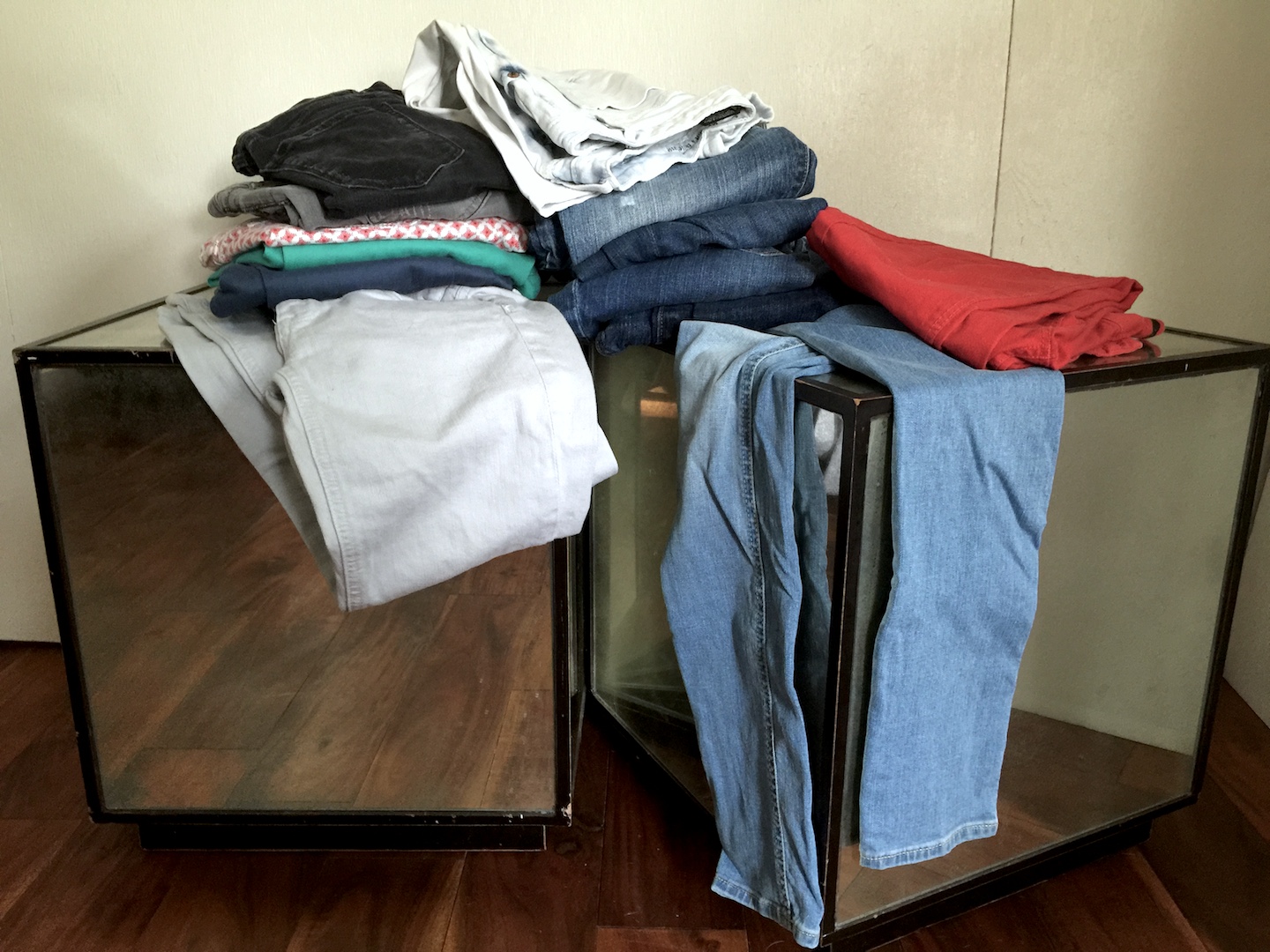
Thanks to Mr. Levi Strauss our autumn closets have all but determined themselves. Since 1871 denim jeans have continued to grow as a wardrobe staple across the globe. American closets appear to be the most saturated with women owning an average of 7 pairs. What started as an essential item for miners and cowboys has since proven its utility through the ages. From 1950’s greaser subculture, to the hippies of the 1960’s, through 1970’s and 1980’s punk rock and heavy metal affiliation, and finally to today where it is worn in almost every setting from the boardroom to the farmers market or a night out. The denim trend shows no signs of slowing down anytime soon. This is particularly evident when you consider the constant style reinvention both in color and shape. Boyfriend, skinny, jeggings, cigarette, bootcut, cropped, curvy, flair, and distressed are just a few of the options you will find at any store.
So here comes autumn… a time when pumpkin spice, sweater, boots and denim pictures will flood your social media feeds. (I am entirely guilty of upholding this trend obsession) Let’s face it there is almost nothing more comforting than a perfectly fitting pair of jeans! Aside from a formal occasion there isn’t any event you can’t wear them to. So what is the big deal? Why are you reading a post about jeans….
When I started looking for sustainable alternatives to my traditional denim haunts I came across some research that was absolutely shocking. Transitioning my wardrobe away from high street finds to sustainable is of course well intended but understanding the reasons why is a bit like a rabbit hole. There is so much information to take in, process, and implement. No wonder most consumers don’t make the change. How can they when there is no central place to understand the impact of their choices and find alternatives? Who has that kind of time? Luckily, I do! I never wanted to just provide my readers with alternatives. I want you to understand exactly why you should invest in sustainable fashion. This is the first article out of many that will provide you with the information you need to be a more informed consumer, and just as, if not more stylish than before!
Now that you know the abridged history of denim lets talk about production and break it down from there. Denim (denim is simply a fabric like any other that is then sent out to individual design houses which is then manufactured into what you can buy in stores) is created from cotton. The cotton is either handpicked or picked by machines and then is carded (brushed) to clean, disentangle, straighten, and gather the fibers together. At this point the fibers are called slivers. The slivers are then joined, twisted, and pulled together to create longer and stronger threads. Voila now you have a yarn!
The traditional color of denim is indigo blue which is chemically synthesized. Each ball of yarn is dipped in the dye to achieve the desired color. It is then combined on a mechanical loom with white threads to give the traditional jean color we have all become accustom. From there these denim rolls are sent to manufactures who, using templates, cut, sew, and treat (to create the desired texture), steam, box, and ship to the final destinations. Up until now this doesn’t sound too bad but lets take a closer look at the process.
Approximately 17% of global cotton production is used for the creation of denim. While many of us, including me, associate cotton with sustainability because of its biodegradability, the process of cultivating it couldn’t be further from sustainable. 2.5% of global farmland is used to grow cotton. Yet, 10% of all chemical pesticides and 25% of insecticides used in global farming is for cotton. The use of these chemicals often results in severe illness for the workers with symptoms including headaches, nausea, constriction of the chest and throat, and in severe cases loss of reflexes and death. While most of us know that pesticide and insecticides are undeniably harmful to the workers what you may not have heard about is the collateral damage. A 2002 study conducted by the Pesticide Action Network, Rural Legal Assistance Foundation, and United Farm Workers of America found in California that cotton crops ranked third in contribution to total pesticide illness in workers. Out of 26.7 million acres used for farming in California all of which potentially use pesticides and insecticides, cotton production makes up approximately 33% of available farmland.
Now you could argue some workers are made aware of the health risks and provided appropriate training, or they should be given appropriate, prevention tactics however, there is large-scale collateral damage. In 1996 an incident occurred in which an estimated 250 workers fell victim to pesticide poisoning when they came in contact with chemicals blown in from crop dusting an adjacent cotton field. This is just in the United States. In a Communities in Peril report 2,200 individuals were interviewed in Asia, Africa and Latin America and the results found that “those who applied pesticides in these countries could neither ‘find nor afford’ adequate protective equipment. I wouldn’t call that collateral effect so much as a direct disregard to individual workers health. There has been further evidence found that pesticides used in cotton production completely neglect distance to local communities.
Here in the United States we are subject to some oversight and regulations using pesticides but that hasn’t stopped their misuse that in turn has wreaked havoc on local aquatic life and other livestock. Carbamate and Organophosphate insecticides (these are considered some of the most hazardous used in cotton production) have been known to kill livestock including cattle in Australia, and wash into rivers killing thousands of fish, frogs, and other aquatic life. There have been several well-documented cases in which insecticides and pesticides used for cotton are directly responsible for the death of animals and severe health degradation of workers and bystanders. Most of these reports provide insight into production costs in the United States which leaves one to wonder and deduct that in countries where regulations are more relaxed or all together disregarded the catastrophic fall-out is much higher.
So we already know that in countries outside the United States workers are not provided or cannot afford protection from the chemicals but what about other workers rights. The sixth leading producer of cotton, Uzbekistan, is known to have one of the worst human rights records in this field. The Cotton Campaign has worked for years now to document the human rights atrocities in Uzbekistan and Turkmenistan when it comes to cotton production. In case you thought forced-labor was a thing only for communist countries i.e. North Korea, you would be wrong. “Uzbekistan has one of the largest state-orchestrated systems of forced labor” implemented to produce cotton. Farmers are forced to grow and produce cotton quotas under threat of penalty, including “the loss of the lease to farm land, criminal charges, and fines.” This seems insane to me considering in the U.S. many farmers are paid not to grow! As if that wasn’t bad enough millions of citizens are mobilized to both grow and harvest the crop. Up until recently this included children as young as 10 to abandon school; schools generally close during harvest season to accommodate the governments demands. Since 2014 it was required that anyone over the age of 17 join the production however, in order to offset the loss of child laborers there has been a massive mobilization of teachers, doctors, and other adults. As you can imagine this has all but shut down the schools and medical facilities during harvest. Some townships have still used child laborers in order to meet the government quotas and avoid penalties for failing to meet production targets.
Of course this isn’t all safely run and inspected. This system of forced labor has claimed several lives (the cotton is picked by hand) as a result of exposure to chemicals in the fields, unsanitary housing conditions, and lack of unsafe drinking water. Uzbek’s who push back demanding recognition of their human rights have been harassed, exiled, and detained under the current Karimov regime. (You can read more about the human rights violations and global campaign to stop it here.)
We have already talked about the potential devastation insecticides and pesticides have on local habitat but what about water consumption? In a nutshell approximately 1,500 gallons of water are used to produce 1.5 pounds of cotton. Those 1.5 pounds of cotton are then used to produce a single pair of jeans! To give you some perspective you could shower everyday for a month and still have water left over! As of February 2015 there is an estimated 1.2billion total number of jeans sold worldwide. Do some quick math and this means 1,860,000,000,000 gallons of water is used to produce denim jeans. Let’s just round that off to an even 1.8 trillion gallons and put that into perspective. That is just shy of 2 cubic miles of water or double the amount of water wasted annually as a result of decaying infrastructure in the United States.
Information on just how much water is used in the denim dyeing process is a bit more scant but let’s just say the number of gallons only continues to increase.
We all have them in our closets: distressed, faded, ripped, vintage… translated to all mean the same thing. These styles of jeans are arguably the most harmful of all in the denim production world. A collaborative report ‘Breathless for Blue Jeans’ conducted by several international bodies documents the health hazards in six Chinese denim factories located in Guangdong province. This region is responsible for half of the world’s entire production of denim jeans. The desire for pre-worn jeans has increased over the years and the best method (cost effective to companies) is to use a process known as sandblasting. “Sandblasting involves firing abrasive sand into denim under high pressure, whether in a machine booth or simply via an air gun attached to a hose.” Sounds pretty straight forward, right? Well the process of sandblasting is responsible for putting workers at risk of silicosis, a deadly lung disease caused by the inhalation of silica dust. The Turkish government first brought the catastrophic result of sandblasting techniques to the public when they banned the process. A study published by Chest found that workers who were afflicted by silicosis as a direct result of sandblasting had a 69% survival rate in five years. Of the 32 males included in the study 6 of them died and 16 had disabling lung damage. Without proper ventilation, safety equipment, and training the risk of silicosis increases. Call me crazy but preventing someone from breathing so I can wear a pair of distressed jeans is just not worth it. While many governments have outlawed sandblasting and many denim companies have agreed to ban the practice the ‘Breathless for Blue Jeans’ report says sandblasting is just as prevalent behind closed doors.
Thanks to international pressure from governments and independent bodies there have been several companies that are starting to overhaul their denim process. It is certainly fitting that the company with the namesake of denim jean patent holder Mr. Levi Strauss is making the change. Levi’s Water<Less jeans uses 96% percent less water to create a single pair and offers several styles under the collection. To date they have saved 172 million liters (45m gallons). Other companies include Monkee Genes (born out of frustration of lack of conscious denim they are the first and only company to be accredited by the Soil Association and the Global Textile Standards), Nudie Jeans, Prarie Underground, Kuyichi (the aim for a closed-loop production system and are one of the first creators of eco friendly jeans), The Battalion, and Reco Jeans (denim company that uses leftover materials from other manufacturers to ensure nothing goes to waste).
I would love to hear your feedback on this article and know whether or not this has helped shape how you will shop for your jeans! With every purchase of sustainable denim you not only make a difference to yourself but help show companies you want a more environmentally and humanitarian friendly closet!

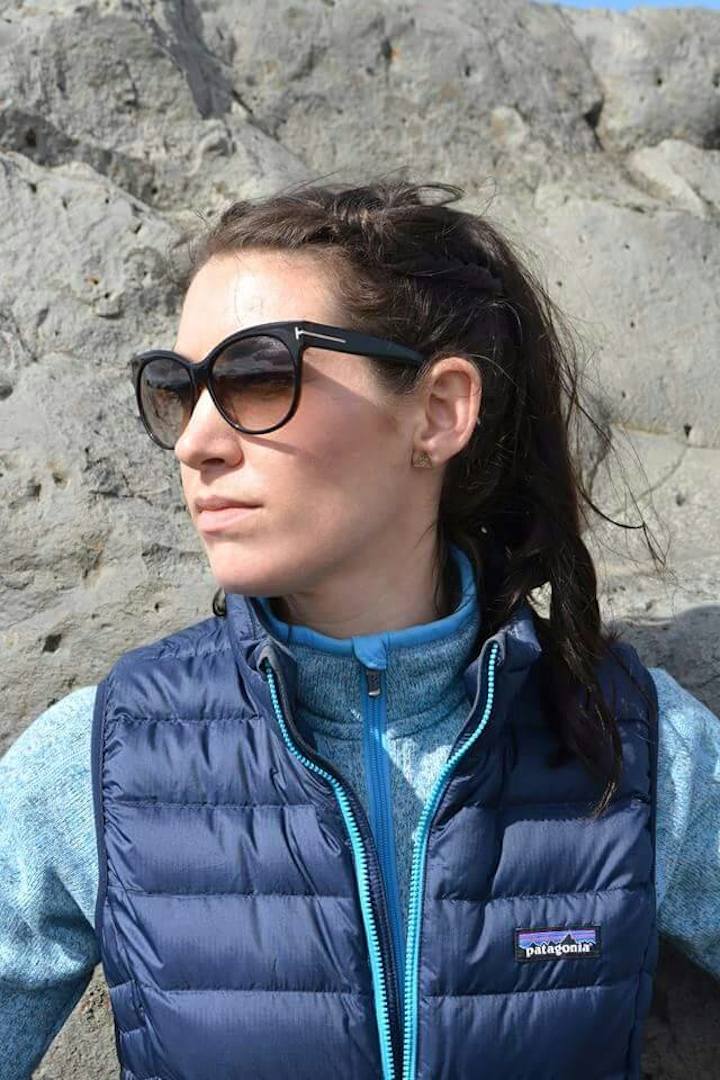
[apss-share]
“Because in the end, you won’t remember the time you spent working in the office or mowing your lawn. Climb that goddamn mountain.”
― Jack Kerouac

In both the outdoor apparel world and the eco fashion world Patagonia has quite a reputation. It is known for quality goods that will last a lifetime and are shockingly good for the environment, both in production and in recycling. Realistically, most of us aren’t hiking everyday and/or eco fashion still isn’t quite on the radar. So what about Patagonia for everyday wear?

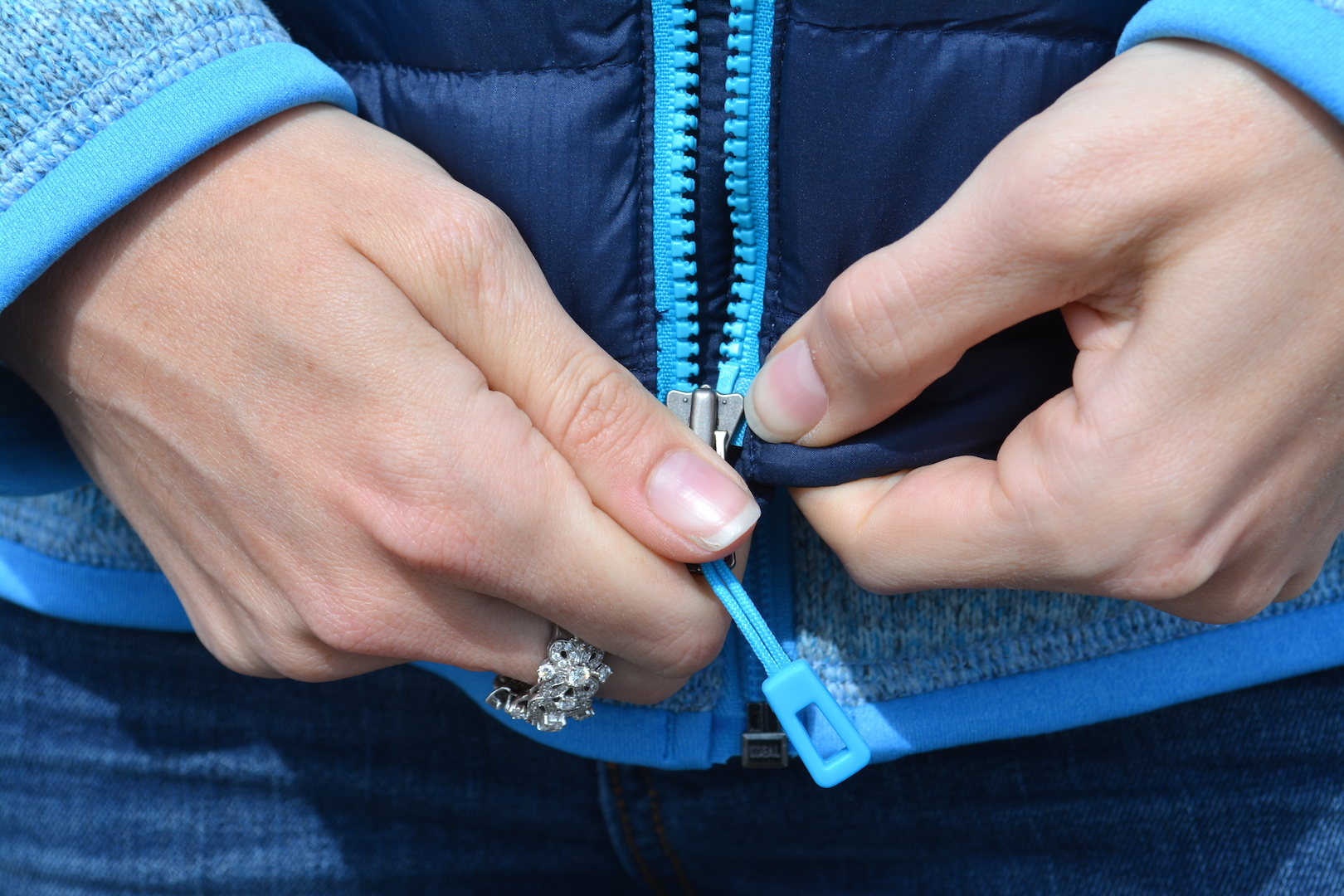
I have seen Patagonia outerwear just about everywhere you can imagine. From the mall, to a University classroom, to a jacket to wear out to dinner, museums, worn around the city, hiking and many, many other places. There seems to be no end to its versatility. It also seems that every teenager has a fleece or two to throw on at a moments notice. Did I miss a trend somewhere along the lines?
Not really. Americans have had a healthy obsession with athletic wear as day/night wear for quite some time now. Patagonia takes it to the next level in both style and price point. Nicknamed “Patagucci” because of some of the items often jaw dropping price tags, I wanted to see if it was all style with no substance so I decided to give them a try on my trip to Iceland. As a modest hiker and someone who was in need of versatile clothing I thought it was now or never to invest in a few pieces.
Here is what I bought:
1. Better Sweater Jacket in Dusk Blue at $139

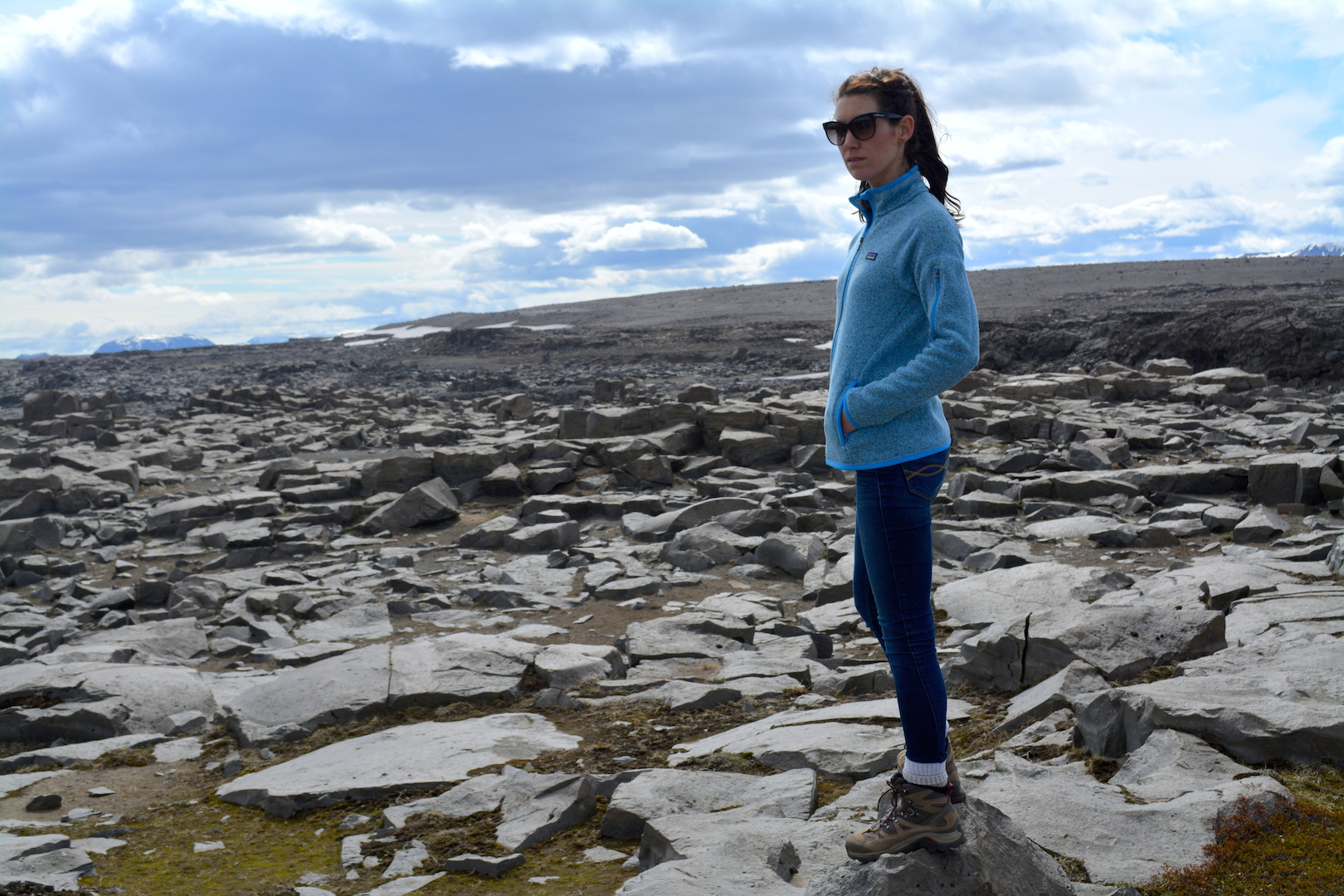

First impressions at the store: There weren’t as many options as I had hoped. I’m not a big online shopper. I like to try on for fit and feel the weight and texture between my fingers. For this very reason I headed to REI in Framingham, MA. Unfortunately, the end of the winter meant that heavy duty Patagonia items weren’t the top sellers at the moment and therefore size and inventory options were limited. However, I was happy to see a variety of vests and fleeces. In terms of versatility I liked the idea of a vest because I could pair it with other items or throw it on when I needed a quick warm up. The zip up sweater was also a great choice because I could layer it both under and over other options. As for the bag… well who doesn’t love a great bag to go with their outfit. I liked the sling style of the Atom bag and it held a lot more than I was expecting.
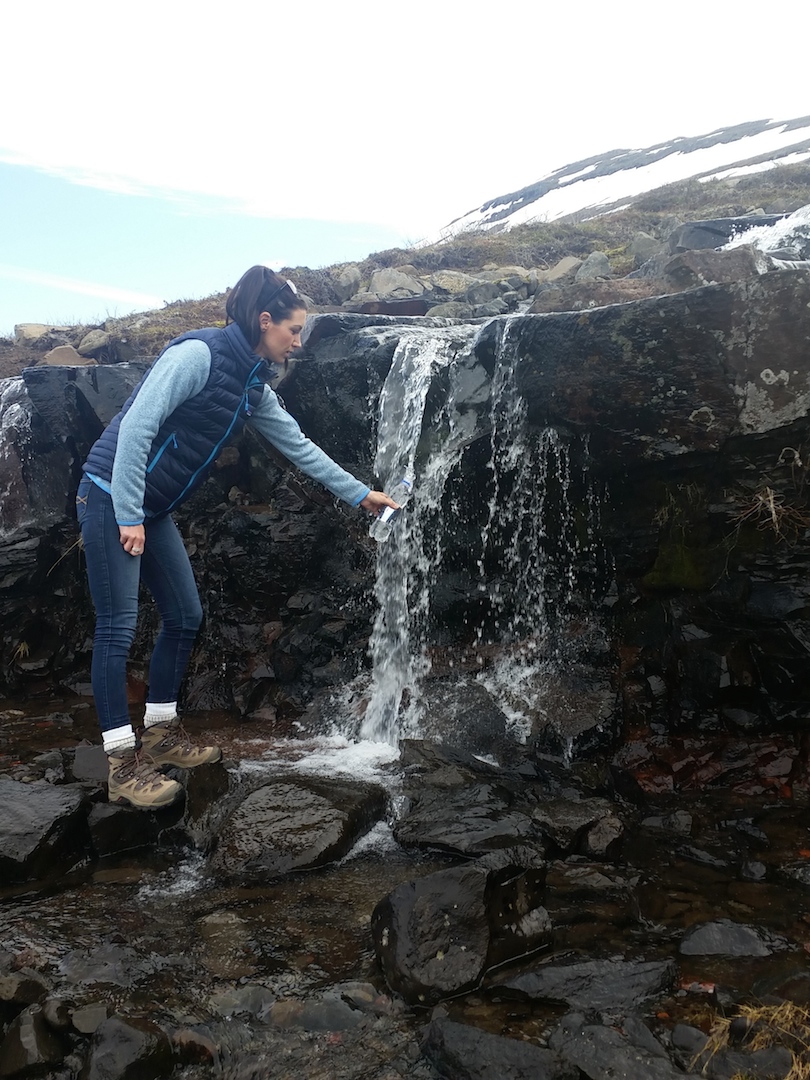
It turned out Iceland was windier than I thought and as a result it felt incredibly cold on some days. There were moments I literally couldn’t feel my fingers or lips. I was definitely surprised by Patagonia. I wore their gear towards the end of the trip and with the help of a pair of gloves felt the warmest I had been during my ten days there. The vest is made with 100% traceable goose down and 100% recyclable polyester. Don’t let the recyclable part throw you. Like their website says “it’s worth its weight in gold”. As for the sweater, it is made from a polyester fleece that is ridiculously warm! It also has the Bluesign technologies seal of approval. This basically means that apparel baring this mark has used only chemicals, materials, and processes that are safe for the environment, safe for workers, and safe for the consumer. It is a win-win for everyone involved.
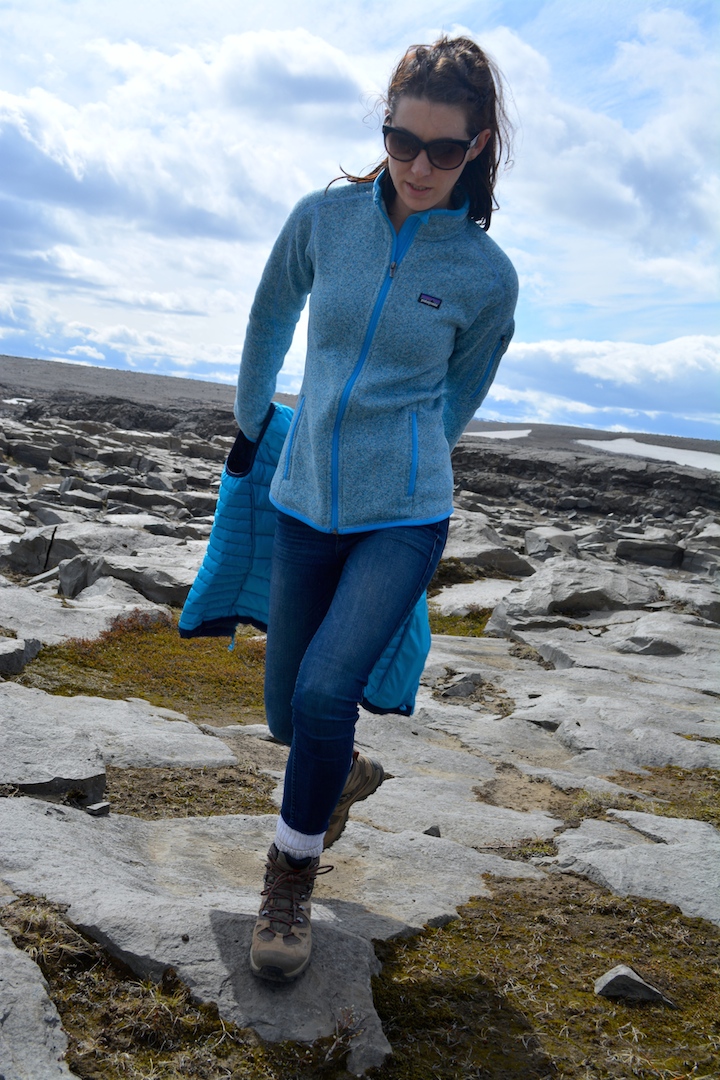
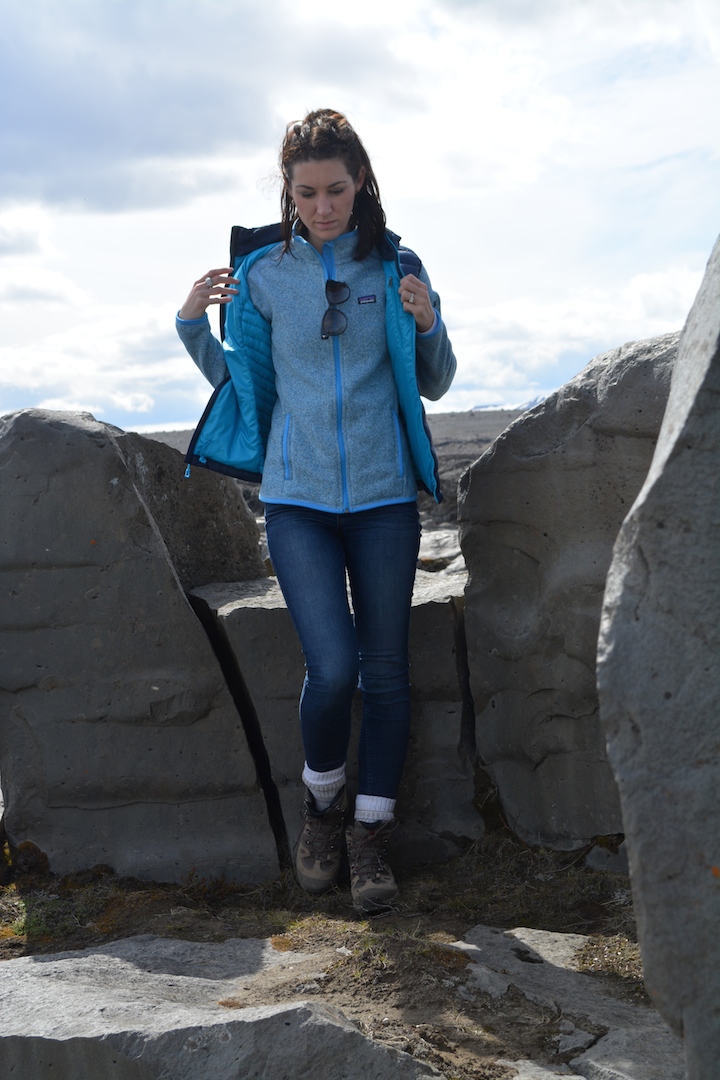
Overall, I have to commend Patagonia on their creative genius to reuse and manufacture goods that the consumer will 100% benefit from. From the rugged terrain of Iceland to a dinner date in the city, Patagonia has become synonymous with style and sustainable fashion. As for the nickname “Patagucci” I don’t really think it is warranted. I personally own several other outdoor apparel items that are neither as warm, durable, or stylish and all cost much more. Patagonia is definitely worth the investment.


In case you needed one more reason to invest in Patagonia apparel they have several options under their “Worn Wear” program. This includes everything from repairs both professionally and DIY, to buying and selling used items, to taking in your worn out Patagonia apparel and transforming it into something brand new. Talk about serious sustainable commitment. You can read more about their Worn Wear Program here.

I hope all of you that want to get to experience the beauty and tranquility of Iceland at some point in your lives. But, I also hope that we all help to do our part in preserving the natural beauty of such places by investing in companies such as Patagonia. With the continued rate of pollution from the fashion industry it will inevitably have a negative impact on the places we hold so dear if we all don’t make a change. One small purchase can make an enormous change!

This article was not sponsored or promoted by Patagonia or Bluesign Technologies. All apparel mentioned and worn in the article and accompanying pictures were purchased by myself. A huge thank you to REI in Framingham, MA for helping me to pick out the perfect pieces!
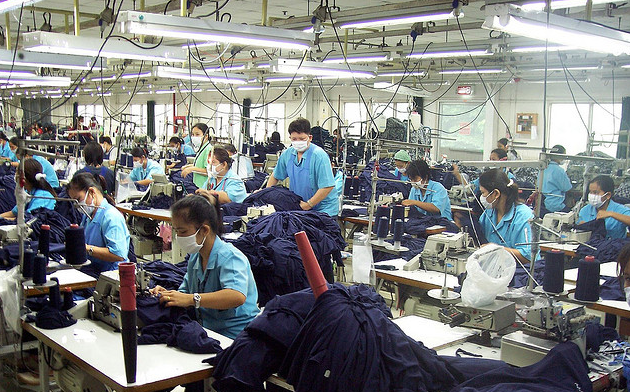
[apss-share]
“The rights of every man are diminished when the rights of one man are threatened.”
― John F. Kennedy
By now, most of you have probably seen the John Oliver bit on “Fast Fashion”. If not, keep scrolling, I included at the end 🙂. In true John Oliver style he brings to light in a satirical nature some of the endemic problems and down right abusive happenings in the fashion industry. Over the past few decades, reports, news highlights, and academic papers have highlighted the down side of fast fashion. So why does it keep fading from our memories? Is it that we have too much else on our minds? Could it be that we feel removed or out of touch with such atrocities? Is it too big of an issue to tackle as an individual? Or perhaps, it just hasn’t become main stream enough to do anything about as the collective. Before I start jumping to the reasons why I think we keep ignoring these news stories let’s first explore what exactly I’m talking about!
What is Fast Fashion?
Fast fashion or value fashion really started to gain momentum in the 1990’s. Larger or specialized fashion houses which we have come to call “High Fashion” was on average releasing approximately two collections of clothing each year – Fall/Winter & Spring/Summer. With increased globalization in the 1980’s and 90’s medium to smaller clothing retailers could now lower their overhead and labor costs to a fraction of what was being produced in Europe or the United States. Outsourcing! With lower production prices these value retailers could now create and import clothing in which consumers could buy more of and more frequently as a result of the cost savings. This shift was dramatically seen in a comparison between the amount of clothing women owned in the 1980’s compared to early 2000: four times as much!
This brought about micro seasons, where companies started to out-do one another by presenting several new styles per season to the consumer. Marketing campaigns and low prices were meant to overwhelm the purchaser into buying more. And, guess what? It worked! This was all done in the spirit of raising profits for the companies. I for one, can openly admit I have been a victim of the low prices and marketing campaigns that transcend to social media. I will think twice before wearing a dress I have already been photographed in. Well done fashion retailers – objective achieved!
It is no wonder so many have fallen victim to the fast fashion boom. Many retailers including H&M, Zara, Old Navy, and Forever 21 to name a few receive new items every week leading any passer-buyer to wonder if what they bought two weeks ago is already out of style. It is – at least according to the manufacturers. Knowing that the majority of consumers will ultimately give in to this “I’m already out of style mentality” and buy more week after week quality begins to fall by the wayside. Why bother investing company money in the strongest denim fabric available when you know the skinny jeans you use them for will only be replaced by a boyfriend style the next week? From a profit margin standpoint you wouldn’t.
Why is Fast Fashion Dangerous?
So this is fast fashion – high turnover, lower cost, and as a result lower quality clothing. All created in an effort to raise company profits. So where is the down side? Let’s start with what’s wrong for the consumer.
You may think that lower prices means more cost savings. However, lower cost means you buy more as a result of lower perceived savings and ultimately end up with inferior quality. The faster clothing is produced, generally, the faster it falls apart. This means those shorts you bought last year are most likely only making it through one season and back to the store you go the following to buy another. In the long run, lower quality materials don’t stand the test of time and really do damage on your wallet.
What about the workers? Outsourcing clothing manufacturing seems like a good idea when we are talking about lowered prices however, it has an enormous negative human rights impact. Labor standards that we too often take for granted here in the United States are not the same throughout the world. There have been countless stories of building collapses, low wages (we are talking maybe a dollar a day), and unbearable hours. Not to mention children are often caught working in these factories. Unsanitary conditions and the use of hazardous materials all present separate challenges. It’s enough to make anyone cringe.
The environment. One of the many downsides of fast fashion happens as a result of the volume being produced. World Wildlife Fund reported it can take up to 2,700 liters of water to produce the cotton needed for just one shirt. That’s not even the water needed for dying, rinsing, and repeating this process. While a majority is wrapped up in agriculture the real troubling impact on the environment is the use of chemicals that are then released back into rivers and streams that remain unregulated in certain countries. This is the same water that individuals use for washing, cooking, and is needed for other day to day uses. Without going too much in depth – it’s disgusting and hazardous to all. Where do you think that water eventually ends up? Back in the ocean! Which then contaminates our food sources and ultimately will reach back here at home!
So Who Is To Blame?
Some corporations will have you believe it is the consumers fault they are not producing more ethical/eco friendly fashion – none of them will openly admit to human rights violations. “If the consumer demands it, we will make it” seems to be the motto. And, while I think this is partially true companies are responsible for their practices. They can choose to release hazardous waste into water sources, they can choose who to employ and under what conditions, they can choose what fabrics are biodegradable or can be recycled vs. those that don’t. (Ladies, I’m sorry to say your spanx is not one of these fabrics).
I also think the consumer can demand change. By choosing to purchase smarter and less, the way fashion is consumed can be turned completely around. It seems that the issues have been ignored because we don’t know where the alternatives are and/or they are not as accessible. You are not wrong!
So What Do You Do Now?
There are tons of resources out there if you know where to look for both information on the fashion industry and also alternatives. But who has the time? When you are in need of something to wear I’m guessing you don’t want to spend a couple of hours researching. I have you covered. WTT will be launching a new shopping page with a list of stores, manufactures, and designers that are making strides to change the face of fashion. I will be providing you with alternatives that are both cost effective and in style with current trends. With the movement away from in store shopping to more online purchases this initiative will put both access and control at your fingertips!
Stay tuned for the launch!
